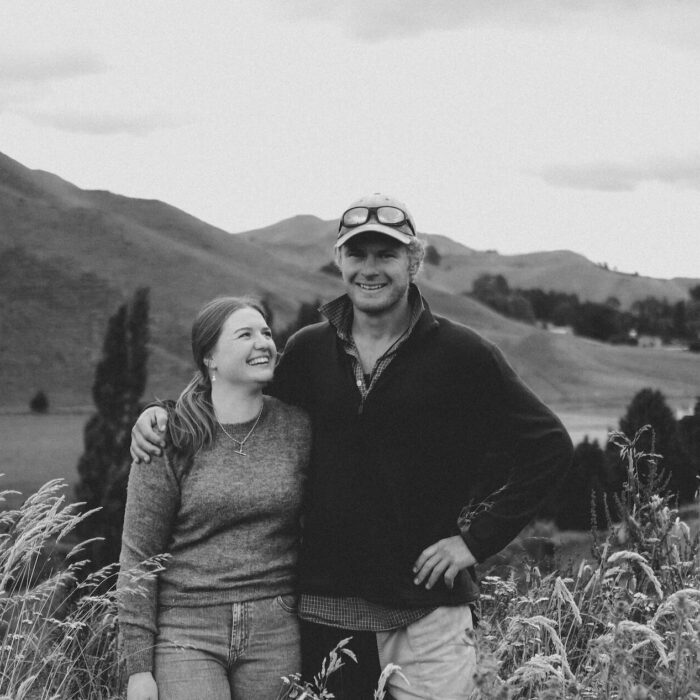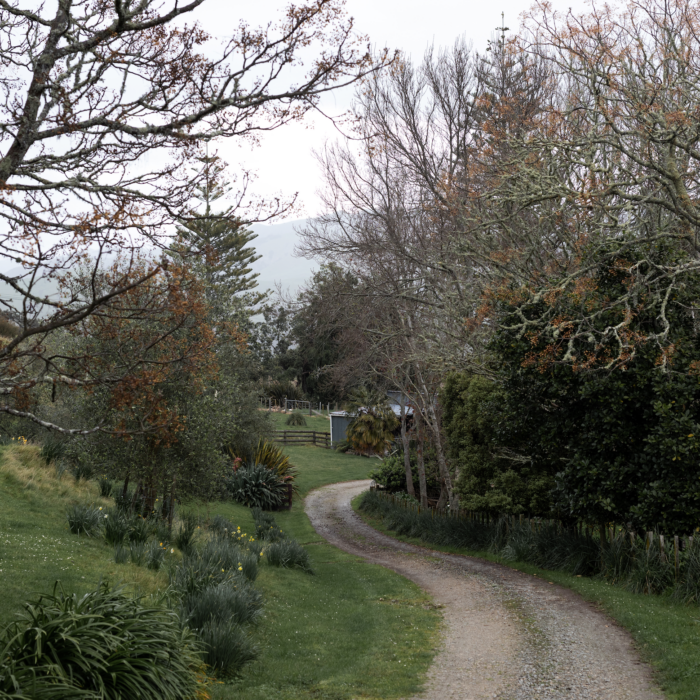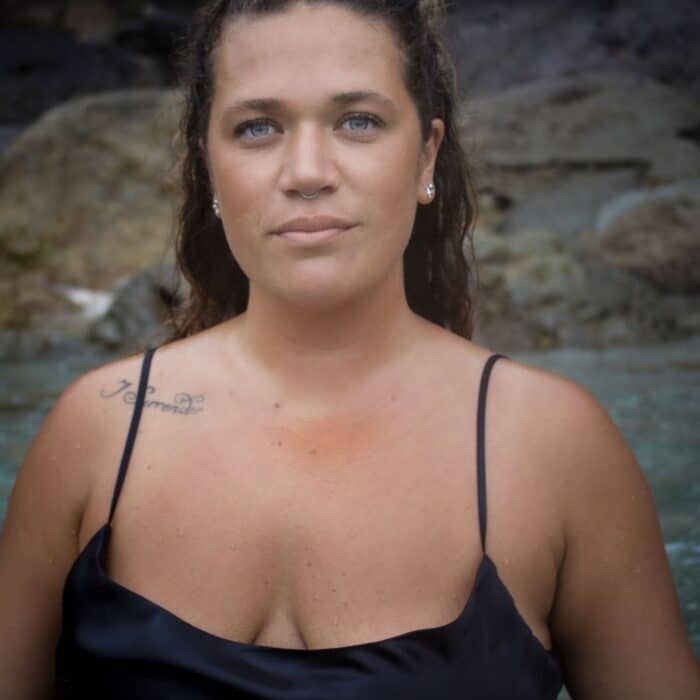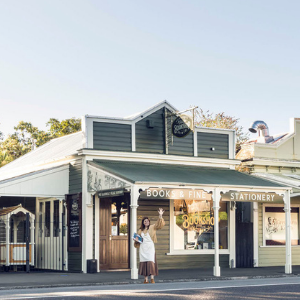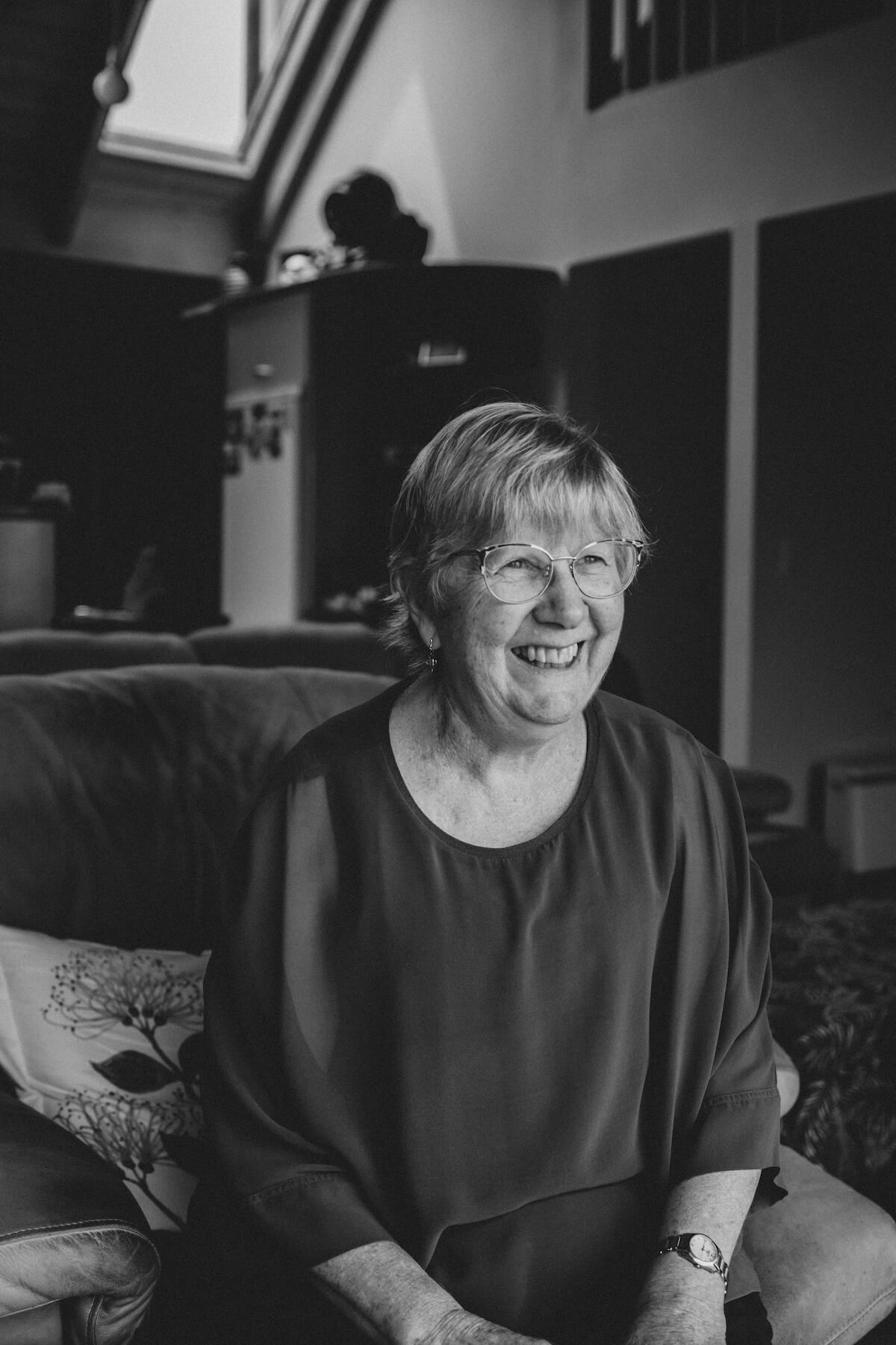
I’ve been on Great Barrier Island thirty-seven years. I did my nursing training in Auckland Hospital, and then went to Australia for eight years. While I was there, I began working with women and children and I realised that quite a lot happens before and during birth. So I came back to New Zealand to do my midwifery training at what was then St Helen’s in Auckland. I then worked for two years consolidating my training. My partner Shannon and I are both rural people and we had originally intended to return to Australia but decided to give rural New Zealand a go first – the job on Great Barrier Island was very similar to what I had been doing in Australia.
In 1994 I joined with the island GP and his wife [Ivan and Leonie Howie] and we formed a company, Aotea Health. We took over all the health services and amalgamated the public health aspect and the GP practice – before that he was private and I was half public health and half district nursing, and the midwifery was chucked in the middle there somewhere. Ivan and I were both new to homebirths when we came to Great Barrier, and once we’d done a couple of births, we could not believe how amazing it was.
When I first started attending births, hardly anybody here had alternative power. People were operating on 12-volt systems, or they were just using candles. Ivan’s job was often to hold the torch so we could see what we were doing. Then water births came into vogue and the understanding that you didn’t really have to see, you could actually feel what was happening. Some women wanted to have water births, but the logistics of it were horrendous. Most people on the island had small hot-water cylinders heated by a fire, so to try to fill a birth pool was pretty hard.
Because it’s an island and with the weather, planes don’t always fly and helicopters don’t always come, especially in the night. So what you’ve got is what you’ve got, and you have to deal with it. It’s always the middle of the night, and it’s always when there’s a big storm. There’s a risk involved with homebirths out here, and the women always know that. There are, of course, daytime births, but probably only twenty per cent, compared to eighty per cent at night. Daybreak births are beautiful; I’ve had a lot of babies born as the sun’s coming up, and that’s such a spiritual moment, but it does mean that you’ve had no sleep.
A nice thing about this location is I don’t stop seeing these babies after they’re born. After six to eight weeks, I put a different hat on and I become the child health nurse. And then I put another hat on and I become the school nurse. And then they go away and get professions and partners, and now they’re all back and I’m helping birth their babies.
I’m still looking after women at the moment, antenatally, but it’s just too difficult [now] doing the births alone. I’ve always done a lot of the births on my own, but if I needed help there was always somebody in the background who was able to assist. It’s just got harder – and a lot of the births are down the other end of the island. It’s an hour down and an hour back, and then there’s all that time at the birth. I just don’t recover as readily as I used to, and there comes a time where you feel that there’s a potential for it to be dangerous. I did three births at the beginning of the year on my own, and two were in the night. Both were quite long and exhausting and I thought, “It’s time, I have to stop.” My husband asks, “How much longer are you doing this?” and I say, “Well, the Queen worked until she was nearly a hundred.” He says, “I think she had a bit more support than you’ve got.”
A while ago a midwife came to replace me, but she ended up saying there wasn’t enough midwifery and too much nursing. As a nurse I have a car and all the emergency gear and all of that sort of stuff, which makes it easier, and basically the primary health practice subsidises the midwifery. There is not enough money for someone to just do midwifery. I am exploring other options, and there are things happening for women, but at the moment they are going off the island for their births. We will always have antenatal care available, but there might not be the ability to have a homebirth.
In childbirth, every intervention has a consequence. One of the first and most common interventions is removing women from their own safe environment – their home. What inhibits birth, what slows everything down, is fear and pain and not knowing the people you’re with. If you go into the hospital, even me as a midwife, I feel very fragile and out of my depth. That’s what the women feel, and their partners feel it even stronger. When you step inside the hospital, no matter how welcoming they are, you’re in a foreign environment. You feel pain more when you’re tense, and that makes you more tense, and that slows down the whole procedure. When women are labouring at home, they’re relaxed. They haven’t had to pack up and go anywhere. They’re in their own environment. They’ve got their own music, they’ve often got their friends around them. So everything tends to go smoothly. You can be very hands-off, and just let the women do what their bodies tell them. And that’s really powerful. I haven’t done it for them, they’ve done it themselves. It’s very freeing, and there’s a lot of laughter. To me, it’s about empowering women and their partners through a positive birth experience.

This story is part of THREAD, a year-long project by Shepherdess made possible thanks to the Public Interest Journalism Fund through NZ On Air.
Related Stories
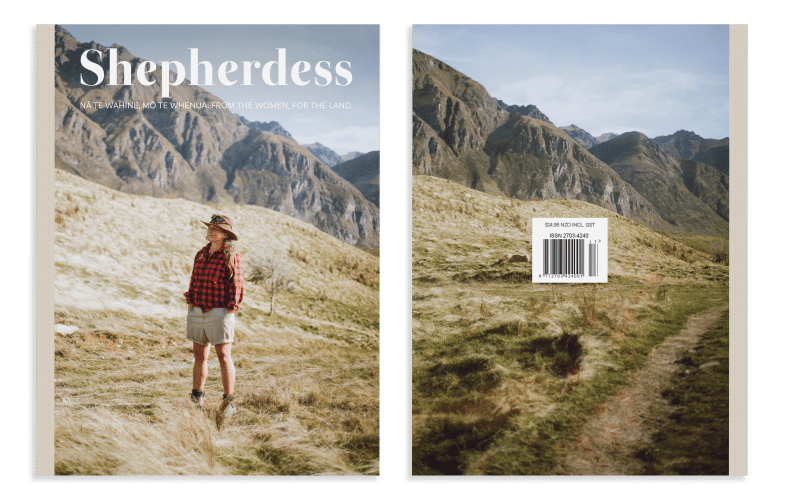
Out Now
Seventeenth Edition
Our beautiful Ngahuru Autumn 2024 Edition is out now!
